Many of my friends and neighbors have been #SafeAtHome during the Pandemic which has led to many home improvement projects. I’ve not had the #AloneTogether experience, but that’s not a criticism. I did get some days here or there to work from home and saved alot of money not going out or traveling for vacations.
So I, like many, am tackling home improvement projects with the bonus cash earned by what I’ve named Forced Frugality.

I happen to be very privileged to have found my dude. My hombre. My love of a lifetime. My partner in crime. He also happens to be a BOSS at construction both new and renovation.
For those who do not live with a craftsman, you have to hire it out. Also, disclaimer – there are some things my mate can’t/won’t do. Like pour a driveway or run to a quarry and cut out a granite counter top or install carpeting.
Needless to say, in our near twenty years, we’ve lived within our projects. I’ve washed dishes in our laundry sink. I’ve swept drywall dust. Lots of it. He’s a perfectionist with drywall so it could be 3-5 rounds of it. But dang those walls are smooth.

I think about tile work, building decks, finishing basements and primers…I could keep going. We love a great project. Chip and Joanna ain’t got nothing on us. Except a ton more money and more kids. #jealous.

So imagine my surprise, and driven passion to tell you what I learned about construction projects and the dust that you don’t see – specifically a deadly carcinogen called Crystalline Silica.
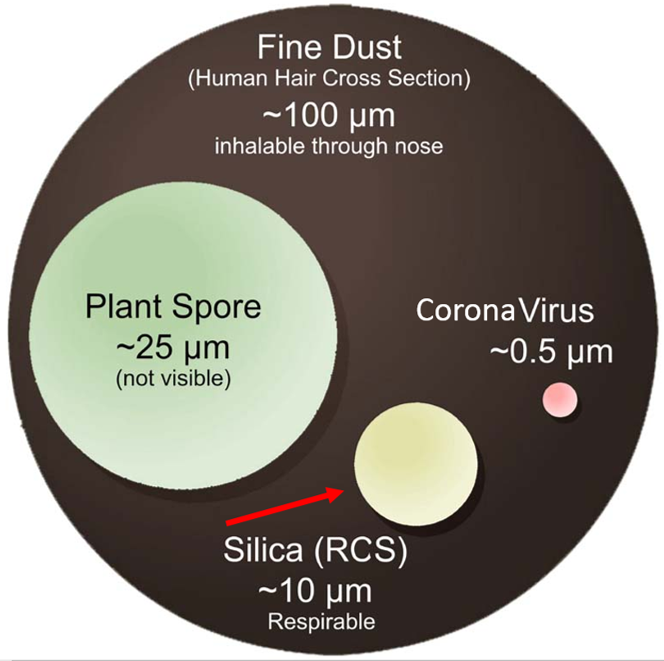
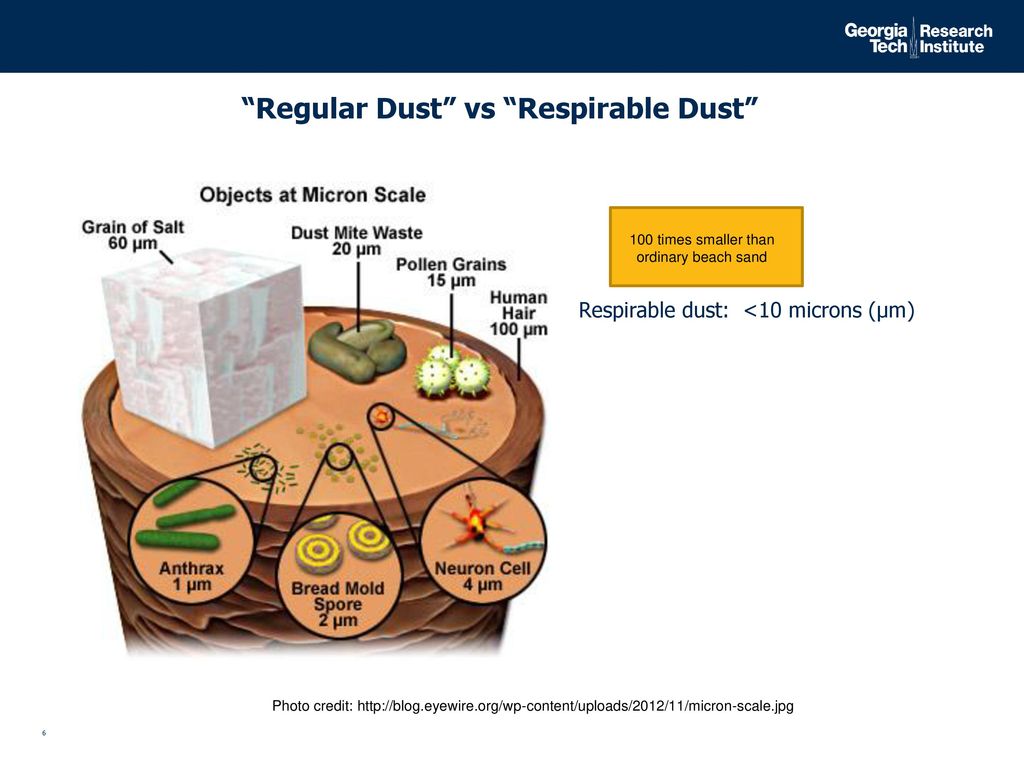
There are some things within dust that are so tiny – not visible even if you put your readers on – that bury deep into your lungs and hurt you, in thousands of cases – kills you.
When I first heard about this invisible enemy called silica, I thought it was like that stuff packaged in your brand new purse or anything packaged in a box.
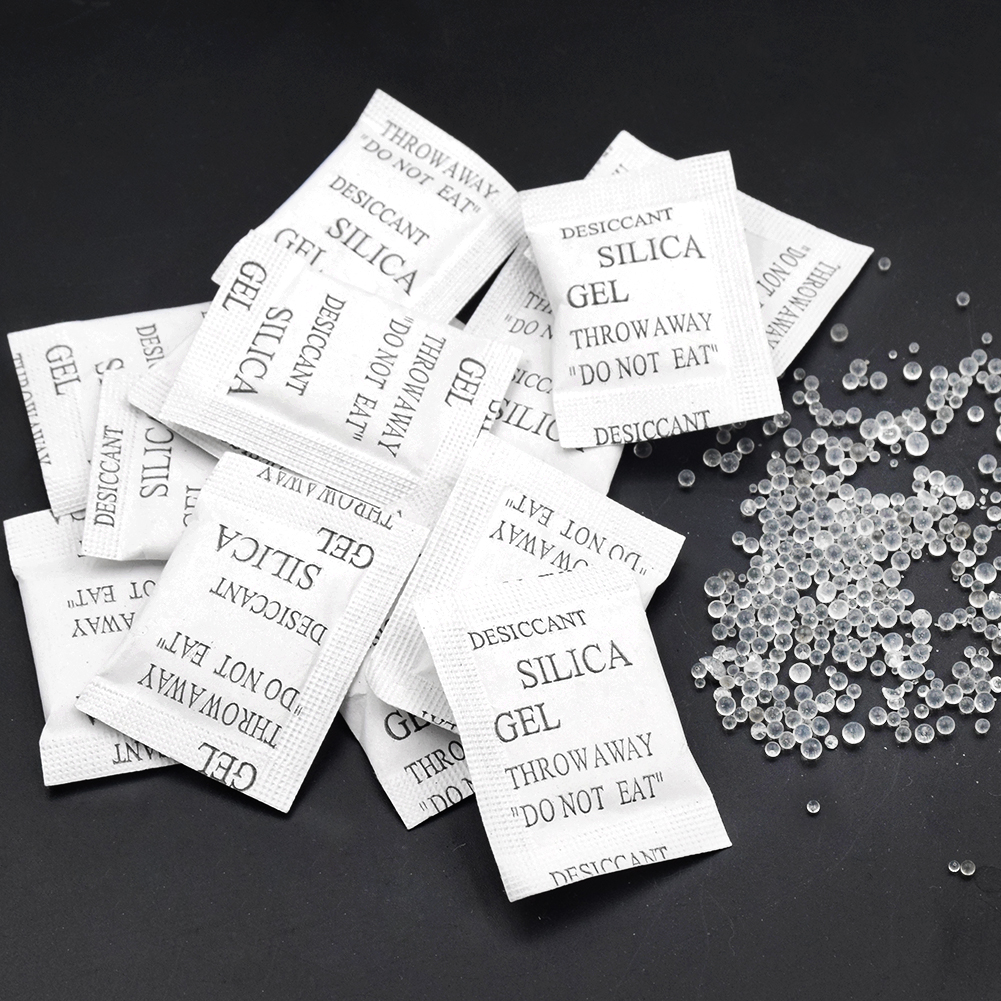
Those smaller than .03 microns—such as crystalline silica—penetrates into the deepest regions of the lung, where they overwhelm the body’s natural defenses, bypass attaching to any mucus or fluids, creating severe inflammation and irreversible scar tissue.
Studies have shown that workers regularly working with invisible particles could over time lose lung function and lead to cancer or other diseases such as COPD, black lung, lung cancer, and silicosis.
This explains the poor coal mining ‘rednecks’, which was a derogatory term created to describe the poor West Virginians around the clock in dangerous mines with only a red handkerchief to cover their mouths. The mountain folk.
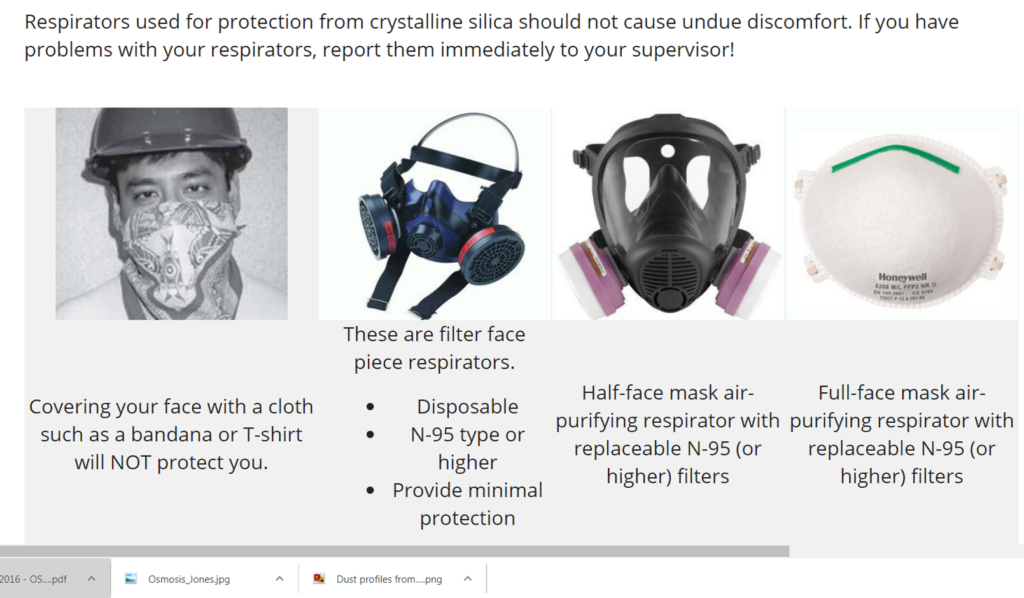
Since you can see drywall dust, sawdust, and even in some cases pollen – your mouth and nose will do a rather good job trapping it. You might have sinus issues, sneezing, coughing, wheezing and allergies but the fear of it getting into your lungs isn’t too big a worry.
Those invisible infiltrators like crystalline silica and asbestos are so tiny that you could breathe them in and won’t know it. Probably why we see all those Mesothelioma commercials when you’re watching Maury.
It goes all the way past your bronchial system to the deep ends of your alveoli. Like a dead end. No outlet.
Here’s a picture of alveoli.
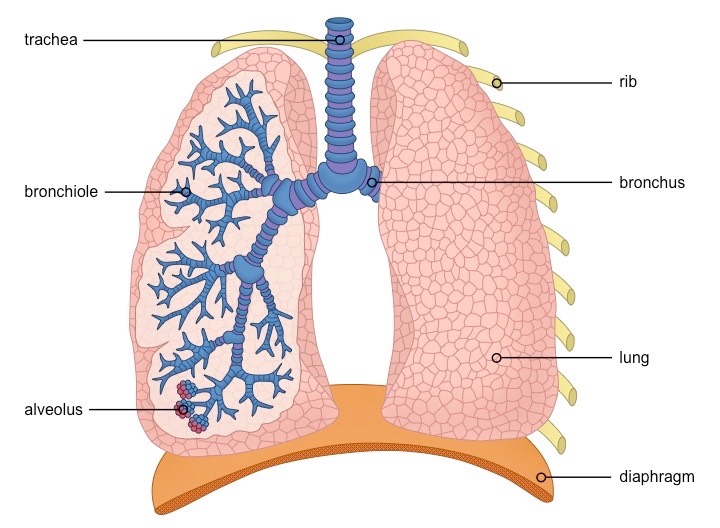
I picture it like upside down lavender.

So it’s bad enough to get floating crap in your mouth, let alone in your lungs, let alone all the way down to the very end of the road – the alveoli.
See, if stuff gets almost there, the stuff that is slightly bigger than crystalline silica, and lodges into the bronchial area which is the stem right before the flower – you got a defense mechanism called mucus and stuff called cilia.
Those magic goo defenders push it back up out of there. You can cough, sneeze, or build up phlegm – it’s like your lungs throw up after a bad night of mixed drinks.
See, if you drink way too much and pass out, you gotta absorb it the whole next day. Like a hangover. Crystalline Silica is like a permanent hangover- it lodges in there and can’t get out.

So what the alveoli has to do to get it out of there is absorb it and let white blood cells called macrophage process it out through the bloodstream. A horrible hangover that wreaks havoc.
Problem is, you can’t grab some Taco Bell Late Night to soak it all up in the meantime. It rips or cuts its way out through the body transfer process like a microscopic Edward Scissorhands who has to escape.

permanent. There is no recovery.”
That’s why in 2010, the EPA, Environmental Protection Agency, implemented the Lead Repair, Renovation, and Painting rule about dust awareness. Then OSHA jumped in and set strict guidelines to protect workers. They said in 2017:
Crystalline silica is a common mineral found in the earth’s crust. Materials like sand, stone, concrete, and mortar contain crystalline silica. It is also used to make products such as glass, pottery, ceramics, bricks, and artificial stone.
Respirable crystalline silica – very small particles at least 100 times smaller than ordinary sand you might find on beaches and playgrounds – is created when cutting, sawing, grinding, drilling, and crushing stone, rock, concrete, brick, block, and mortar. Activities such as abrasive blasting with sand; sawing brick or concrete; sanding or drilling into concrete walls; grinding mortar; manufacturing brick, concrete blocks, stone countertops, or ceramic products; and cutting or crushing stone result in worker exposures to respirable crystalline silica dust. Industrial sand used in certain operations, such as foundry work and hydraulic fracturing (fracking), is also a source of respirable crystalline silica exposure. About 2.3 million people in the U.S. are exposed to silica at work.
<Pardon the interruption – Fracking? Figures. Here’s my whole story about West Virginians. Come to think of it, the oppression suffered there almost makes them like Silica. Invisible to everyone else but not in a good way. Thanks, Byrd! >


Back to the OSHA comment:
‘Workers who inhale these very small crystalline silica particles are at increased risk of developing serious silica-related diseases, including:
- Silicosis, an incurable lung disease that can lead to disability and death;
- Lung cancer;
- Chronic obstructive pulmonary disease (COPD); and
- Kidney disease.”
BIG construction – like highways, commercial property and industrial workers are even higher in danger
Who knew there were dangerous particles in construction dust that are too small to see? There’s also high fear because it goes airborne in ductwork like air conditioning or furnaces.
Here’s a common scale to give you an idea of what this micron measurement of an upside-down P with the top missing means.

We can see things minimally that are 25 microns wide with our eyes. I imagine that’s like when you sand drywall and see the white cloud of dust float around. If you don’t wear something, like a bandana or mask, it tends to get in your nose and mouth. Yuck. Even though the drywall dust eventually soaks in and gets all gross around your face, the mask at least helps for a little while. Then you shake it off and try again.
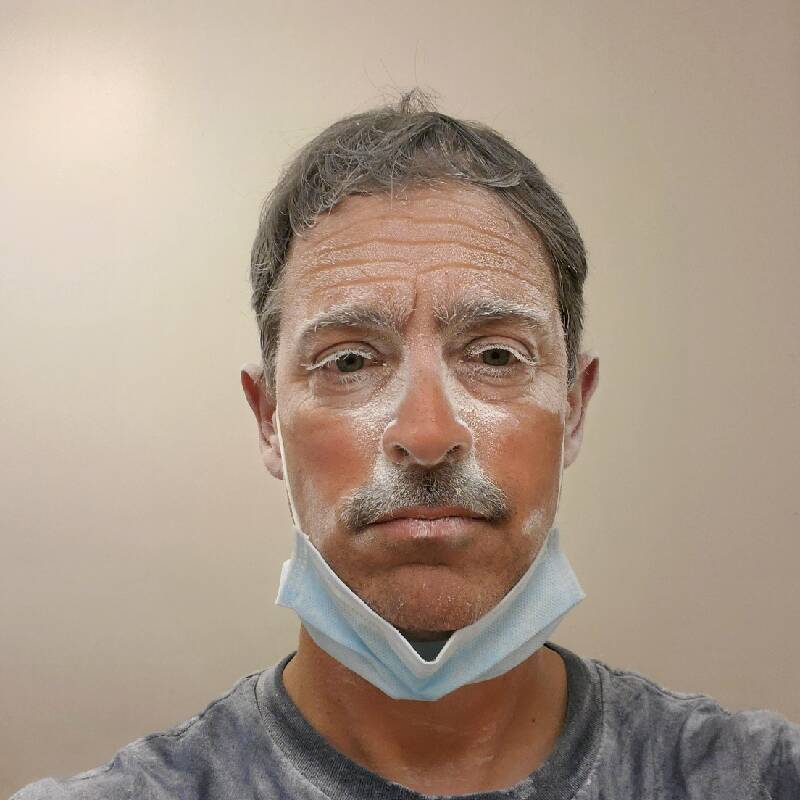
So if you’re going to work on any projects, you need to wear a mask or protective face gear to prevent this bad boy, Crystalline Silica, from getting to the point of no return – into your lungs.
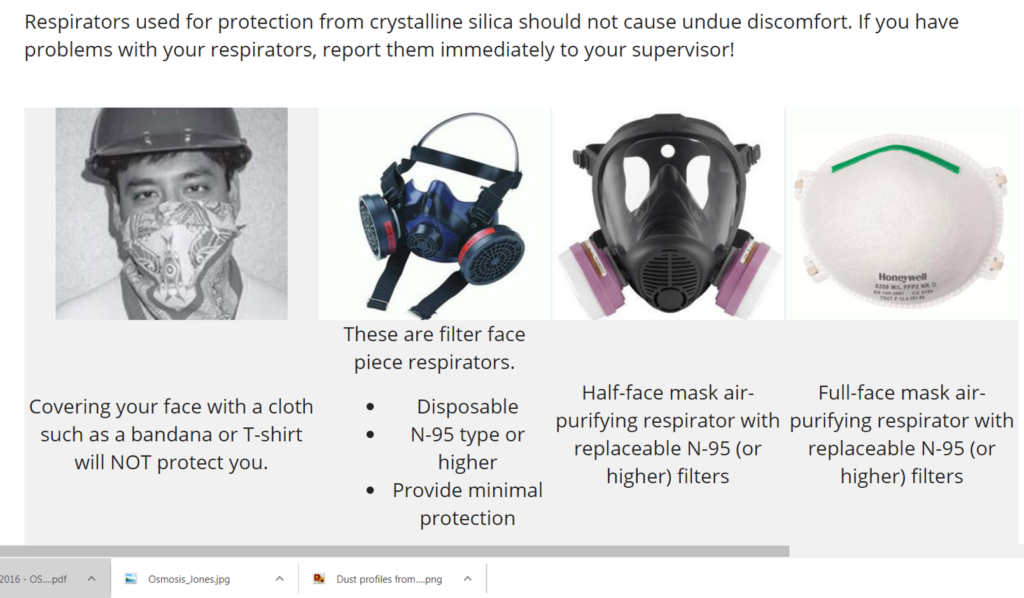

Sealing off ductwork and hanging plastic wall dividers helps, too, and is required by contractors and OSHA. Just remember you can’t see it, and it’s highly airborne.
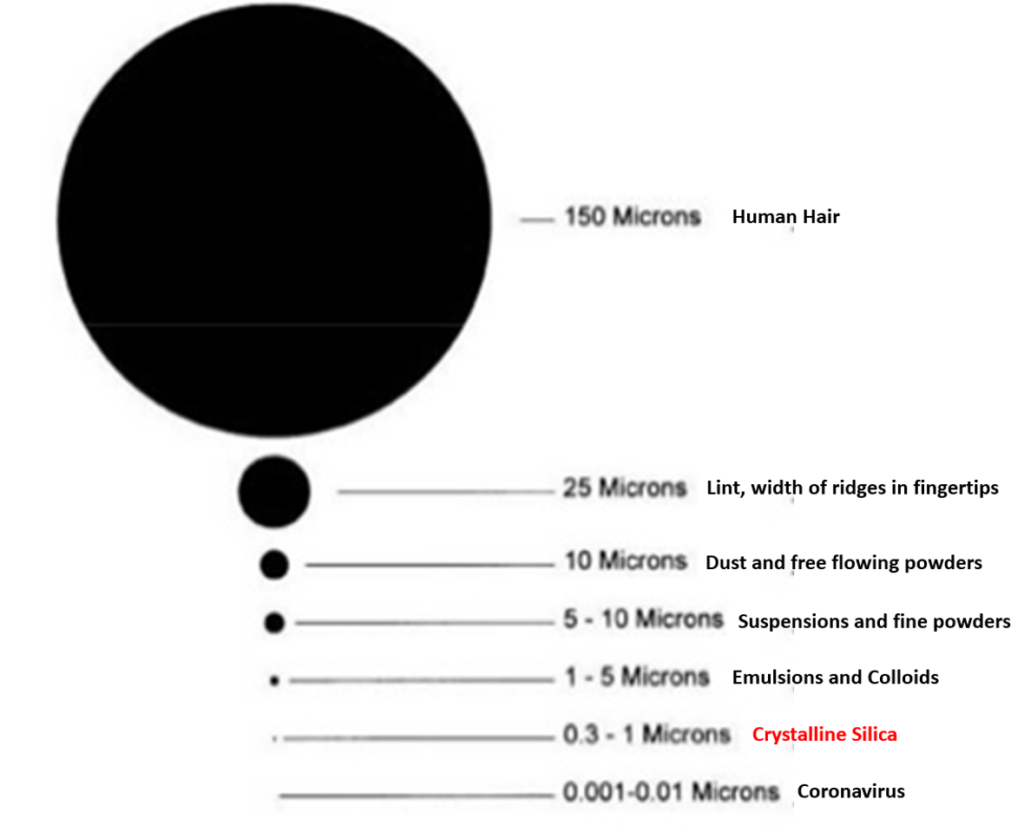
So tiny!
Plus, anyone who has lived in a construction area or near one knows you gotta make alot mess and let the dust settle.
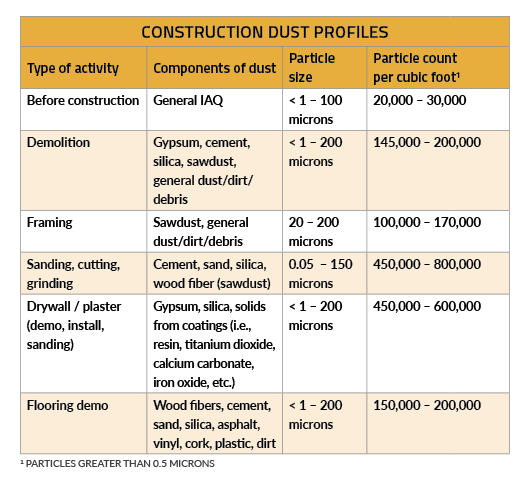
What’s even crazier? There’s a BIG reason why spraying water to keep dust down is important. They’re so tiny and light that they can float around for a long time.
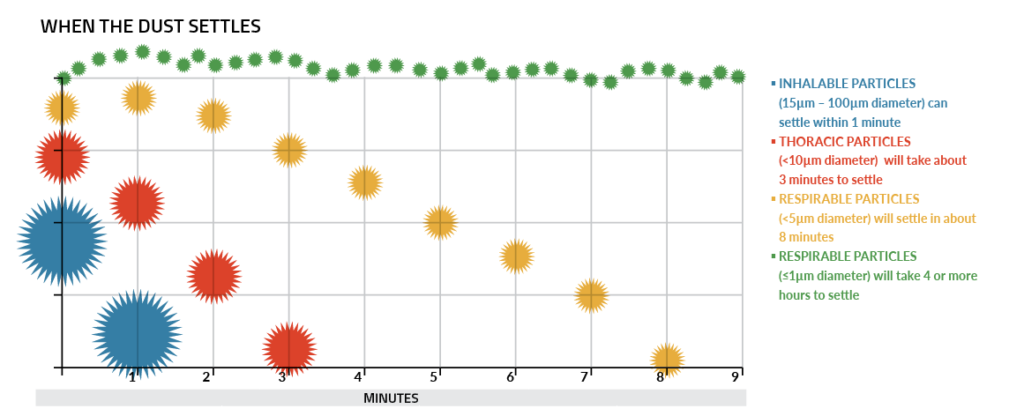
Spraying water while creating dust helps contain the majority of the big stuff, but as this diagram shows, the problem with these tiny invisible silica guys is that they are smaller than water molecules. That means they don’t attach to regular water droplets.
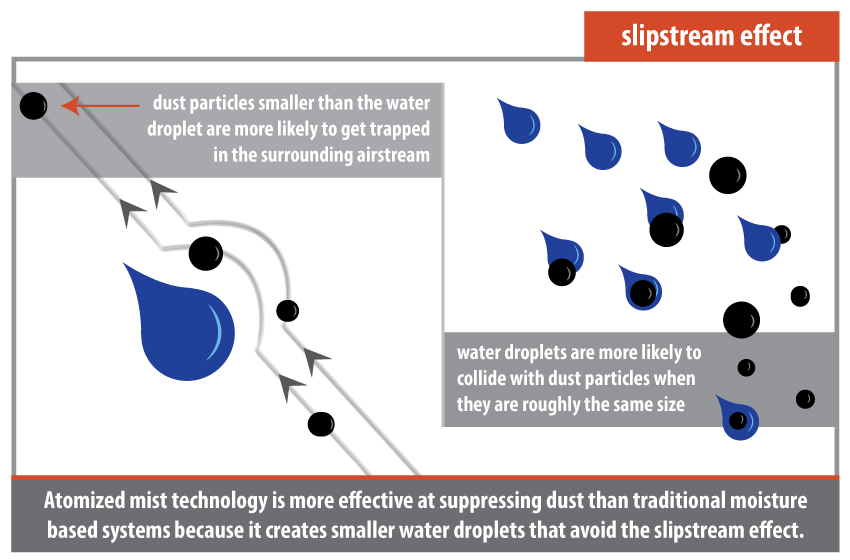
The one question they haven’t discussed, if that if you do inhale crystalline silica, and it’s so tiny that is goes past the bronchial part of your lungs. It doesn’t get stuck there. It instead goes to the end of the road, deep into you Aveoli and cannot come back out of your lungs in the form of mucus-y coughs. Instead, it does the burroughing out to your white blood cells and can also get excreted through your collegen – which is skin.
My understanding is that is why you do not exhale the tiny particles, but you’ll want to wash your body and scrub out any excretion of them.

I know we aren’t professionals doing construction every day. We also aren’t able to get access to the high-end equipment developed to try and prevent everyday workers from dying. However it’s vital to know it exists – many people I have talked to had no idea and are planning many projects also.
I realize many of you are wearing masks to prevent the transfer of Coronavirus. Sadly, those will not protect you from the larger sized silica.
Thanks for reading,
Heather
Please read the sources and sites below if you are planning any projects soon. I want everyone to stay safe!!
Particle Slides From Penn State College of Engineering
ProRemodeler’s Dirt on Dust Pt. 1
University of Minnesota Studies show masks are not created equal
CDC’s NIOSH of Crystalline Silica
Mining Safety of South Africa Explains Science of Face Fabric Mask Failure
University of Washington Construction Silica Hazards and Solutions
National Library of Medicine, Silicosis in Switzerland
Crystalline Silica Exposure by Grainger – Really good one
OSHA’s standards for silica
Wikipedia on Microparticles
Bosstek article on prevention of spread
Somehow, silica, which is more than ten times larger than coronavirus, infiltrates your lungs past the point of fluids and bores it’s way through to the bloodstream and is also too tiny to attach itself to water droplets. It wreaks havoc on your lungs and blood and collagen in skin.
The even tinier than invisible Coronavirus comes back out in your saliva, can be carried in you, never felt yet passed off to someone else by means of spit. And all medical journals investigating its effects have all been edited Recently.



